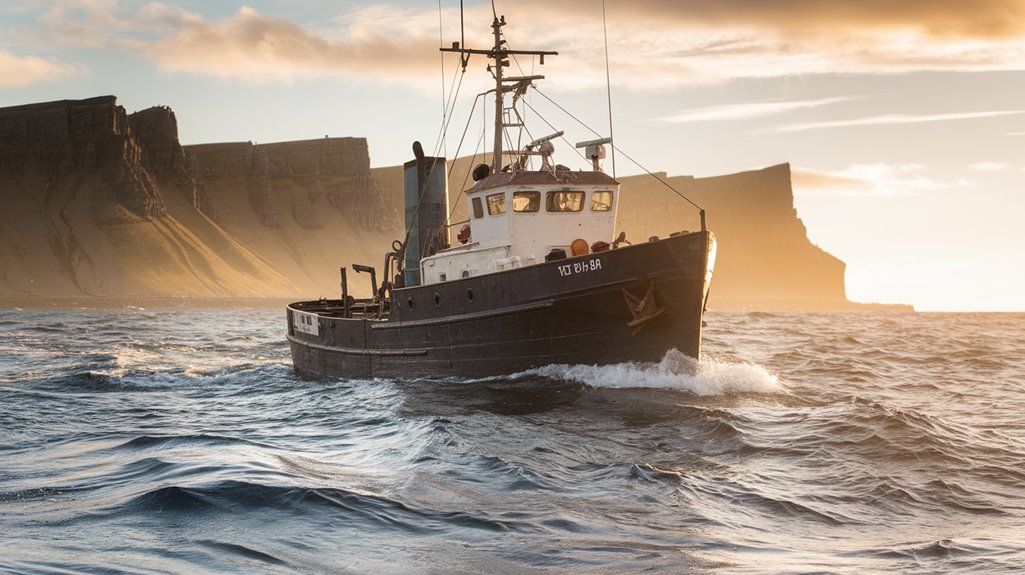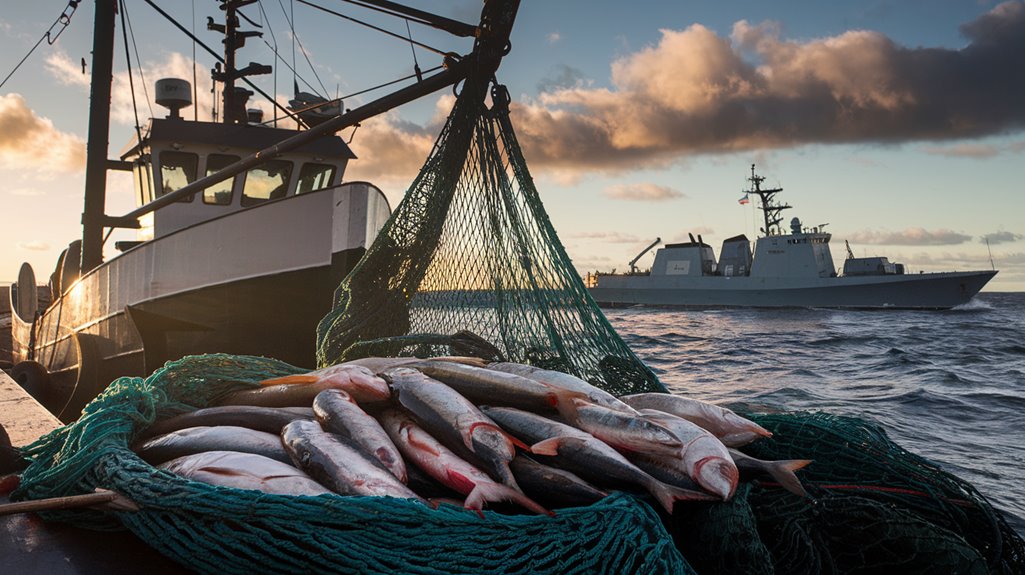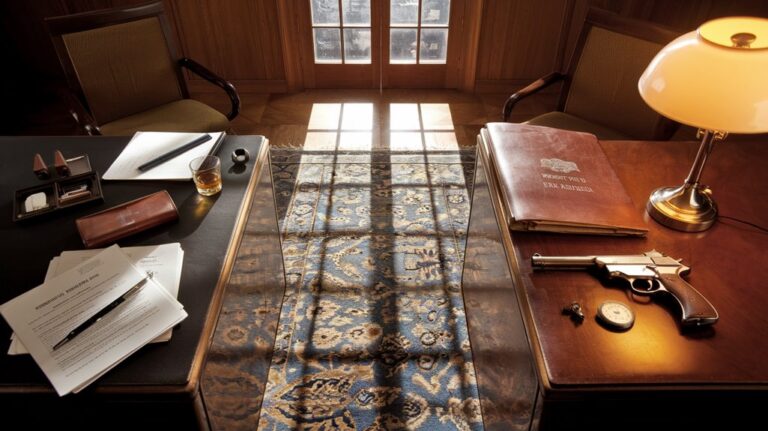Iceland and Britain Had Conflicts Known as the “Cod Wars
Have you ever wondered how fish could spark an international showdown? You're about to discover a fascinating series of conflicts between two unlikely adversaries: tiny Iceland and mighty Britain. In the mid-20th century, these nations faced off in what became known as the "Cod Wars" – disputes that weren't just about fish, but about sovereignty, economic survival, and national pride. What follows is a tale of David versus Goliath on the high seas, where naval vessels clashed and diplomacy teetered on the brink.
Origins and Causes of the Cod Wars
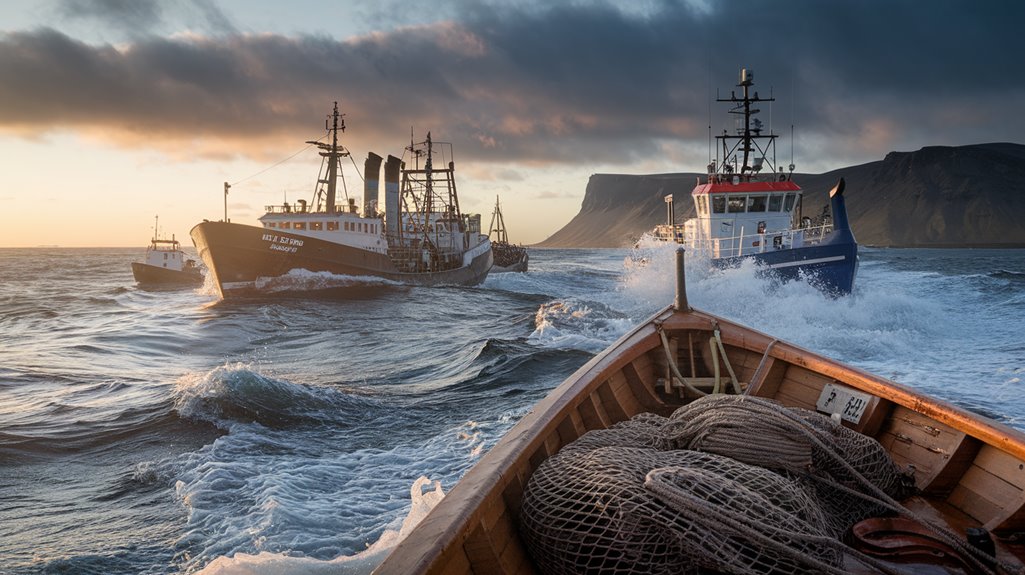
While fishing disputes between Britain and Iceland stretched back to the 14th century, the Cod Wars truly ignited in 1952 when Iceland expanded its territorial waters from 3 to 4 nautical miles.
Throughout the conflicts, dangerous ship confrontations occurred regularly between British vessels and the Icelandic Coast Guard.
The conflict intensified as Iceland sought to protect its essential fishing rights, with the industry representing 80-90% of its economy.
Britain's response to these territorial disputes was swift and aggressive. They banned Icelandic fishing vessels from their ports, forcing Iceland to seek new trading partners, including the Soviet Union. Over the next two decades, Iceland made several territorial water expansions, ultimately reaching 200 nautical miles by 1975.
You'll find that the United States stepped in to support Iceland by purchasing their fish, effectively neutralizing Britain's ban.
Iceland's strategic position in the GIUK gap and its threat to leave NATO added significant pressure on Britain to negotiate, transforming a simple fishing dispute into a complex international crisis.
The First Cod War (1958-1961): A Naval Showdown
After Iceland extended its territorial waters from 4 to 12 nautical miles in September 1958, the First Cod War erupted into a tense naval standoff between British and Icelandic forces.
The UK's naval strategy involved deploying 53 warships to protect British trawlers, while Iceland countered with just seven vessels and a flying boat to defend its fishing rights. Iceland's defense relied entirely on its Coast Guard fleet, as the nation had no formal navy.
You'll find that the confrontations included ramming incidents and net cutting, with both sides refusing to back down. Local protests in Iceland against British actions included large demonstrations with counter-protests featuring bagpipe music.
The conflict strained the Royal Navy's resources, costing nearly half a million pounds in oil alone within a month.
NATO's mediation became essential when Iceland threatened to withdraw from the alliance.
The dispute finally ended in March 1961 with an agreement that recognized Iceland's 12-mile limit while allowing British vessels temporary fishing access in specific zones.
Escalating Tensions: The Second Cod War (1972-1973)
The relative calm following the First Cod War shattered in September 1972 when Iceland boldly extended its fishing limits to 50 nautical miles.
This move sparked intense diplomatic tensions as Britain contested the extension to protect its fishing rights.
You'd have seen dramatic confrontations at sea, with Icelandic Coast Guard vessels using net cutters and ramming tactics against British trawlers, while the Royal Navy deployed frigates for protection. Fast tugboats were deployed by Britain instead of naval vessels during many confrontations.
The conflict took an interesting turn when Iceland leveraged its NATO membership, threatening to withdraw if Britain didn't recognize the new limits.
Even the Eldfell volcano's eruption in January 1973 played a role, temporarily diverting Iceland's Coast Guard to rescue operations.
During this period, a tragic incident occurred when an Icelandic engineer died in a confrontation between vessels.
The dispute finally ended in November 1973 with an agreement allowing British trawlers limited access and catch quotas within the 50-mile zone.
The Final Battle: Third Cod War and Victory (1975-1976)
Just when Britain thought the fishing disputes were settled, Iceland boldly extended its Exclusive Economic Zone to 200 nautical miles in October 1975, triggering the Third Cod War.
The final confrontations were intense, with Icelandic Coast Guard vessels employing aggressive naval tactics against British trawlers, including ramming and cutting their nets. One of the most notable incidents occurred when three British vessels clashed with Iceland's Þór in Seyðisfjörður. This represented a major escalation from Iceland's earlier subsistence fishing practices.
When Britain dispatched Royal Navy frigates to protect their fishing fleet, tensions reached a boiling point. A significant clash occurred when the British ship Andromeda collided with Iceland's vessel Þór in January 1976.
Iceland's threat to close NATO's strategic Keflavík base proved decisive. Under pressure from NATO and the United States, Britain finally yielded to Iceland's 200-mile limit in June 1976.
This victory not only secured Iceland's fishing rights but also helped establish the 200-mile zone as international standard.
Economic and Political Aftermath
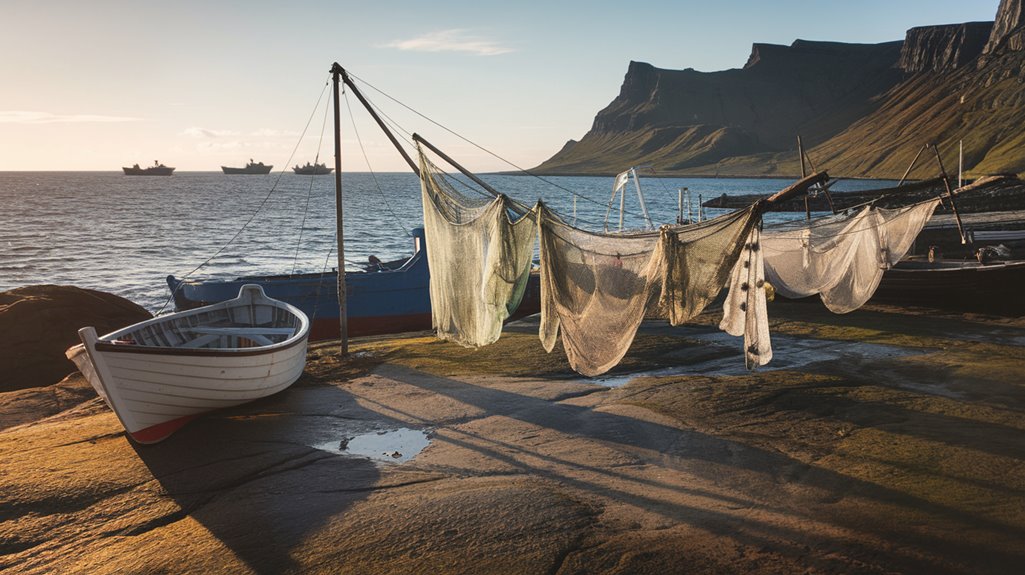
Looking beyond the immediate military clash, Iceland's triumph in the Cod Wars carried far-reaching implications for both nations.
The economic impact highlighted the stark contrast between the two countries – while Iceland's fishing industry represented up to 90% of its export earnings, Britain's fishing sector contributed merely 1% to its GDP. The successful extension from 4 to 12 miles in the First Cod War set the foundation for Iceland's economic security.
For Iceland, securing larger fishing zones wasn't just a victory; it was economic survival. Iceland used non-lethal tactics like wire cutters to disable foreign trawlers.
The political implications proved equally significant.
 fifty-five ramming incidents occurred between Icelandic and British vessels, highlighting the intensity of the territorial disputes.
fifty-five ramming incidents occurred between Icelandic and British vessels, highlighting the intensity of the territorial disputes.
The disputes between Iceland and Britain highlighted two competing principles: mare clausum (sovereign control) versus mare liberum (freedom of the seas).
Iceland's position gained support from earlier rulings, particularly the 1951 Anglo-Norwegian fisheries case. Through diplomatic pressure and international mediation, Iceland's claims ultimately influenced the 1982 UN Convention on the Law of the Sea, which established the 200-mile exclusive economic zone as a global standard.
These changes revolutionized how nations manage their maritime resources and settle territorial disputes.

